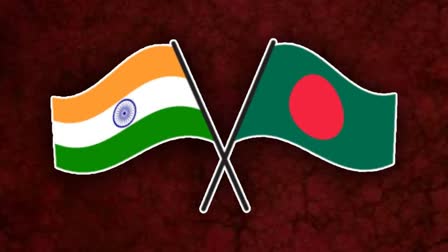New Delhi: With India’s bilateral projects in Bangladesh getting stalled due to the political turmoil in that country, there will be more than one reason why New Delhi will be concerned.
“Due to the turmoil in Bangladesh, our projects have been impacted,” External Affairs Ministry spokesperson Randhir Jaiswal said during his regular media briefing here on Friday.
Stating that India’s development cooperation activities with Bangladesh are aimed at the welfare of the people of that country, Jaiswal referred to Prime Minister Narendra Modi’s Independence Day speech wherein he said that India would always be a well-wisher of Bangladesh and its development journey.
“Work on some of the projects has stalled because of the law and order situation there,” Jaiswal said. “Once this situation stabilises and normalcy is restored, we will engage in consultations with the interim government about the development initiatives and how best to take these forward and what kind of understanding we can have with them.”
He further said that security during the turmoil was a problem “not just for us but for everybody”.
“You saw what happened to the Indian Cultural Centre,” he said. “Bangladesh authorities tried their best. We also had people who came back. Our non-essential staff and their family members had to return. Hopefully, normalcy returns early and we can begin our engagements in right earnest.”
Bangladesh is the largest development aid partner of India. India has extended three lines of credit (LoCs) to Bangladesh in the last eight years amounting to around $8 billion for development of infrastructure in various sectors including roads, railways, shipping and ports. In addition to the LoCs, the Government of India has also been providing grant assistance to Bangladesh for various infrastructure projects, including construction of Akhaura-Agartala rail link, dredging of inland waterways in Bangladesh and construction of India-Bangladesh Friendship Pipeline.
High impact community development projects (HICDPs) constitute an active pillar of India’s development assistance. The Government of India has funded 77 HICDPs including construction of student hostels, academic buildings, skill development and training institutions, cultural centres, and orphanages among others in Bangladesh and 16 more HICDPs are being implemented, with all the 93 projects amounting to over $50 million.
Prior to her ouster, when then Bangladesh Prime Minister Sheikh Hasina came to India on a bilateral visit in June this year, a number of agreements were signed, including on maritime cooperation and blue economy, railway connectivity, digital partnership and a satellite project. However, with the ouster of Hasina on August 5 after a massive political upheaval, all these projects are now faced with a state of uncertainty.
A new interim government assumed power in Dhaka on August 8 with Nobel laureate Muhammad Yunus as the Chief Advisor. Though Yunus has reached out to India, the future of all these projects still hangs in balance.
According to K Yhome, Fellow at the Shillong-based think tank Asian Confluence, during Hasina’s time, India and Bangladesh were able to initiate a number of projects, including infrastructure and connectivity projects, which are mutually beneficial. However, the political developments there have affected the progress of various projects.
“Why India will be concerned is because a lot of money has been pumped into these projects,” Yhome told ETV Bharat. “These projects are heavily funded by India and have to be completed within a timeframe.”
“The other aspect,” he said, “is whether the new regime will give that much focus on the ongoing projects. If they delay these projects for one reason or the other, their progress will be affected.”
